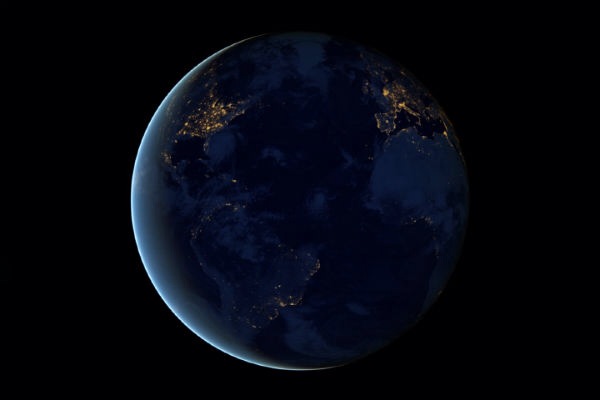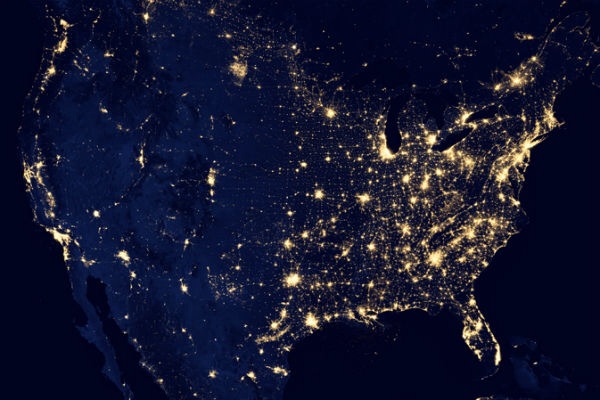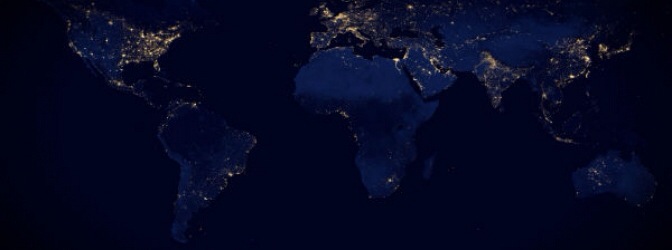Satellite views of Earth by night proves it’s nowhere near as dark as most of us think.
The Earth never sleeps, in fact the night is nowhere near as dark as most of us think.

Planet Earth is never really dark; it twinkles with lights from humans and nature. Away from human settlements, light still shines – wildfires and volcanoes rage, oil and gas wells burn like candles, auroras dance across the polar skies and moonlight and starlight reflect off the water, snow, clouds, and deserts. Even the air and ocean sometimes glow.
NASA/NOAA scientists unveiled an unprecedented new look at our planet at night at the American Geophysical Union meeting in San Francisco, USA on December 5, 2012. A global composite image was constructed using cloud-free night images from a new NASA and National Oceanic and Atmospheric Administration (NOAA) satellite and it shows the glow of natural and human-built phenomena across Earth in greater detail than ever before.

The black marble view – acquired April 18 – October 23, 2012 (NASA Earth Observatory image and animation by Robert Simmon, using Suomi NPP VIIRS data provided courtesy of Chris Elvidge (NOAA National Geophysical Data Center). Suomi NPP is the result of a partnership between NASA, NOAA, and the Department of Defense. Caption by Mike Carlowicz)
The data was captured over ten days in April 2012 and thirteen days in October 2012. It took the space satellite 312 orbits of the earth and about three terabytes of data to get a clear picture of every piece of Earth’s land surface and islands. The new digital data was then mapped over the existing Blue Marble imagery to provide a ultra realistic view of the planet earth.

This image of the continental United States at night is a composite assembled from data acquired by the Suomi NPP satellite in April and October 2012. Credit: NASA Earth Observatory/NOAA NGDC)
